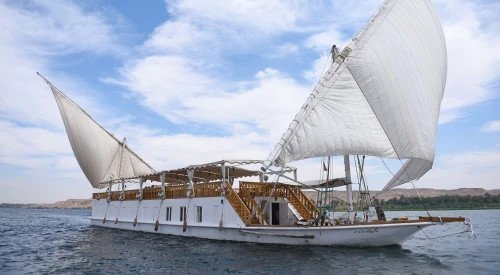Holy Sites of Judaism
Tiferes Yisrael Synagogue.
It is one of the most important synagogues, which was inaugurated in 1872 and destroyed by the Arab armies in 1948 during the Arab-Israeli war. After that, this synagogue was left in ruins, after the restoration of the old city in the Six-Day War, and in 2012 the municipality of Jerusalem announced the rebuilding of the synagogue and a stone was laid the basis for it is 2014.
This synagogue has a very long history in the nineteenth century and that was done by the followers of Rabbi Yisrael Friedman and his son, Rabbi Afrdhome, and this rabbi supported this synagogue with gold and wealth and also Rabbi Nisan bless supported this synagogue.
It is said that this synagogue is named after the father of Israel, who had a major role in building this synagogue and Barak was able to buy the land from the Arabs for a very large amount days before the Russian tsar bought this land.
But the Russian tsar ordered the construction and purchase of another plot of land different from this land and it is now called the Russian compound. Therefore, when you tour inside the old country, you will see in the Jewish quarter a large group of huge synagogues. These temples had a long history before the 1948 war and most of these synagogues were destroyed during This war was then rebuilt and restored, and therefore all these synagogues have a long history, this history is known until now.
The construction of Tiferes Yisrael Synagogue.
Nesan Bek was the architect of this project, and so was the contractor and this engineer consulted another architect called Martin who was designing the Russian complex and it was necessary to build this synagogue outside the old country, which was according to the intentions of the tsar.
There was a great refusal from the Ottoman authorities to grant permission to build this synagogue, and then it was given for building. During the building there was a tomb of a Muslim cleric was discovered in this place and in the end the tomb was moved outside the city walls, but there was another problem standing in the way of building this synagogue it is that a permit should have been obtained from officials in Turkey to build this site, and unfortunately, officials in Turkey did not want that.
After that, construction began in this place, but construction was very slow, and funds were being collected for construction in this synagogue, and therefore this Jewish synagogue has a long history and it took a very long time to build and this indicates the determination in building this place and how many people want to support this site.
It attracted Jews from everywhere as well. The architect has been building this synagogue in a wonderful and very beautiful way in order to be a historical site followed by a large number of people so that it will be a place witness to the historical events of the Old City of Jerusalem.
The wonderful construction of this Jewish synagogue.
There was one of the wonderful stories about this construction that occurred in 1869, when Franz Joseph was in his way for the opening of the Suez Canal, but he visited Jerusalem, and during his visit to Jerusalem, he visited Jewish institutions there during his tour in the old city.
He notices that the synagogue did not have a roof, so you wonder why there is no roof for this synagogue. Therefore, Nesan Bek told him sarcastically that this synagogue took off its hat to greet you, Caesar, so the Tsar smiled and said, I hope to build this roof soon.
So the Austrian consultant left a thousand French francs to build the dome and since the time residents called this dome the cover of Franz Joseph.
The synagogue, consisting of three floors, was opened in 1872 and that was 29 years after the purchase of this land, and after 75 years passed, this place was a centre for the Husseidi community in the city, and it is one of the most beautiful synagogues in Jerusalem. The Synagogue has a large collection of decorations as well as some silver objects.
The destruction of the Jewish synagogue building.
During the 1948 war, the Jews used this synagogue to defend the city of Jerusalem, and therefore the Jordanian army tried to control the old town, and then this synagogue was blown up in the middle of the night.
This synagogue was a stronghold of the Jewish hybrid and this building was supported by Franz Joseph but the Arabs to reach it and detonated it, and they succeeded in that by detonating one of the bombs inside this synagogue.
Reconstructing of this synagogue.
In 1953, Rabbi Mordechai Shlomo Friedman placed the furniture stone for the Rosner Center in the city of Jerusalem to replace the old Rosner Synagogue, which was destroyed in the war and in 1957 he opened the Rosner Religious School, after which a synagogue was built called Tefera Feroz Jezreel, and this synagogue is located on the western end near the central bus station.
This building includes a large white dome reminiscent of the dome of the old Jewish synagogue that was destroyed in the old town that you will see this synagogue inside the old city and one of the most beautiful places of Jewishness in the city of Jerusalem and therefore you must go to visit this wonderful place and enjoy With all its antiques and wonderful things that you will not find anywhere and also enjoy visiting Jerusalem, it is one of the oldest cities in the world that will make you feel happy.
After your visit to this synagogue, you can go to visit other very beautiful areas in the city of Jerusalem, where there is the Wailing Wall, the Church of the Faith, as well as the Al-Aqsa Mosque, as well as you can go on a tour to Mount Al-Tur, which is a very ancient mountain and sacred to many wonderful archaeological sites.
 English
English
 Español
Español
 Chinese
Chinese
 français
français
 português
português
 Italian
Italian
 Russian
Russian
 Czech
Czech
 Deutsch
Deutsch
 Japanese
Japanese









